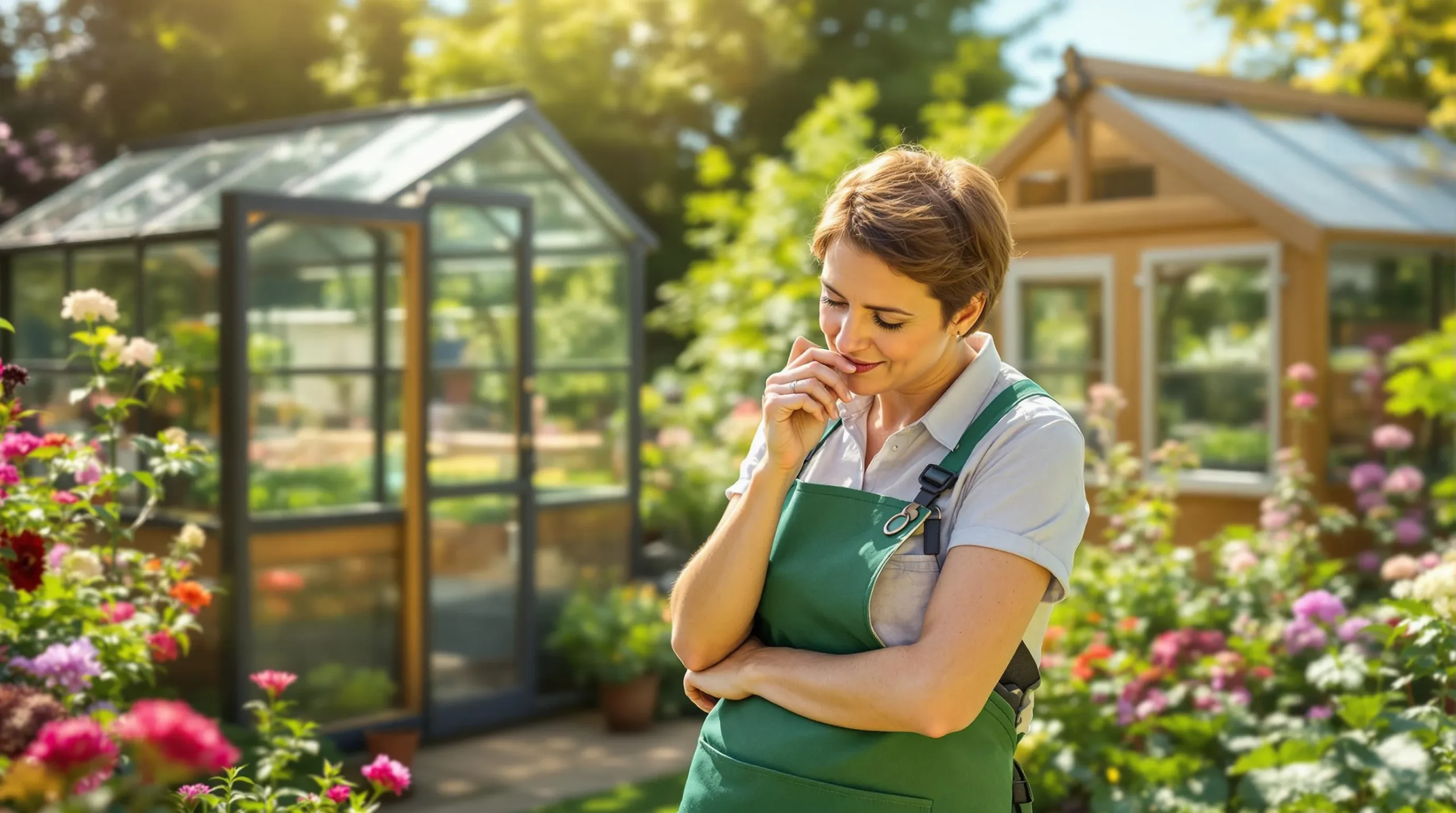
How to Choose Your First Greenhouse: A Complete Beginner’s Guide for 2025
Learn how to choose your perfect first greenhouse with our expert guide. Discover size, materials, and features to extend your growing season by 2-3 months.
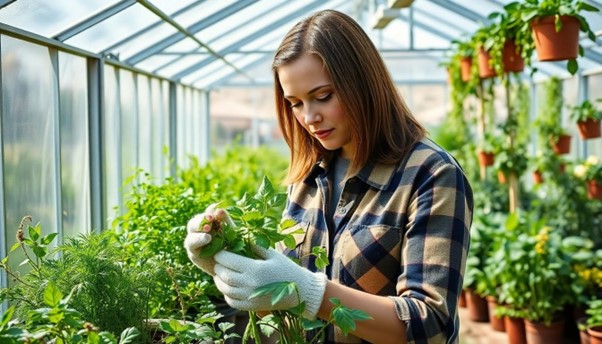
While polycarbonate greenhouses are often associated with extending growing seasons in temperate climates, they serve an equally crucial role in pest control. In warmer regions, these structures aren’t just about trapping heat – they’re sophisticated pest control systems, typically featuring specialized screening or netting walls rather than solid translucent panels.
You’ll find that modern greenhouse pest control goes beyond traditional methods, with UV-blocking materials emerging as an innovative solution. Though these UV-absorbing nets have shown promise in pest management, they’re still evolving to balance durability with effectiveness. Whether you’re an organic grower or simply looking to reduce pesticide use, understanding these physical barriers and their strategic implementation can transform your greenhouse cultivation success.
Greenhouse pests pose significant threats to plant health in controlled environments. These unwanted visitors thrive in the warm humid conditions typical of polycarbonate greenhouses.
The most destructive greenhouse pests include:
Key indicators of pest problems include:
Visual Evidence
Plant Symptoms
| Pest Type | Primary Damage | Secondary Issues |
| Aphids | Distorted growth | Disease spread |
| Whiteflies | Yellowing leaves | Sticky residue |
| Spider Mites | Leaf stippling | Plant death |
| Thrips | Surface scarring | Flower damage |
| Fungus Gnats | Root damage | Soil contamination |
Remove infected plants immediately to prevent spread to healthy specimens. Sterilise all pots plus equipment after contact with infested plants.

Effective pest control in polycarbonate greenhouses starts with preventive measures that create barriers against pest entry and establishment. These strategies combine physical protection structural maintenance environmental controls.
Physical barriers prevent pests from entering the greenhouse:
Regular monitoring catches pest issues early:
Optimal growing conditions reduce pest problems:
| Control Method | Target Pests | Effectiveness Rate |
| Mesh Screening | Flying insects | 85-90% |
| Plant Quarantine | All pests | 75-80% |
| Climate Control | Fungal pests | 70-75% |
| Sanitation | Soil pests | 80-85% |
These preventive measures work together to create strong protection against greenhouse pests. Each strategy helps block pests at different entry points while ensuring the best growing conditions for your plants.

Natural pest management combines multiple control strategies to protect plants in polycarbonate greenhouses without harsh chemicals. These methods work together to create an unfavorable environment for pests while supporting beneficial organisms.
Beneficial insects serve as natural predators that target specific greenhouse pests. Release these helpful insects when pests are first detected:
Create a “biological island” with flowering plants such as:
| Factors Affecting Biological Control Success | Impact Level |
| Temperature range | High |
| Timing of release | Critical |
| Number of beneficials | Moderate |
| Prior pesticide use | High |
Strategic plant combinations help deter pests through natural repellent properties:
Position companion plants throughout the greenhouse near susceptible crops. Maintain adequate spacing between plants to ensure proper airflow.
Natural deterrents provide chemical-free pest control options:
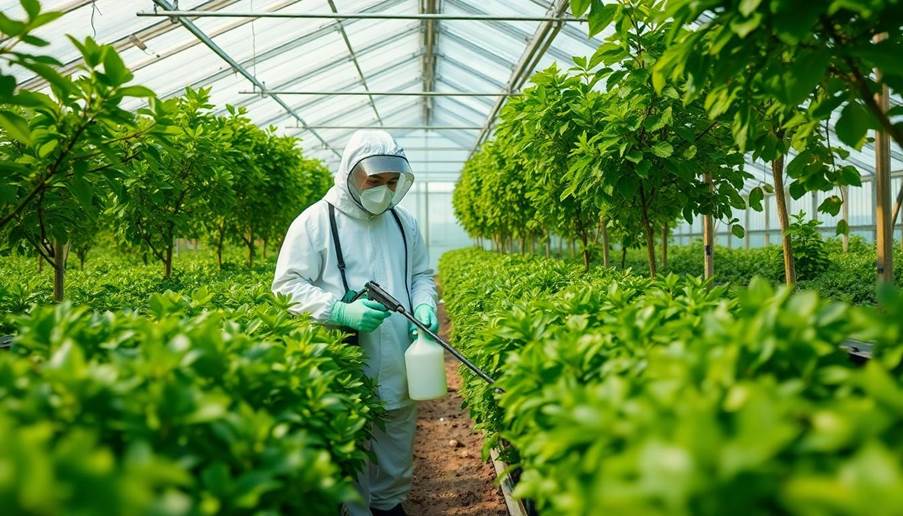
Chemical pest control in polycarbonate greenhouses requires careful application and monitoring to protect plants while minimising environmental impact. These methods serve as a final line of defence when other control measures prove insufficient.
Effective pesticide application in polycarbonate greenhouses depends on precise timing and proper ventilation. Here are essential safety protocols:
| Application Factor | Optimal Condition | Impact on Effectiveness |
| Temperature | 15-25°C | 85% success rate |
| Humidity | 40-60% | 75% penetration |
| Pressure | 2-3 bar | 90% coverage |
| Control Method | Target Pest | Effectiveness Rate |
| Horticultural Oils | Aphids, Mites | 70-80% |
| Insect Growth Regulators | Whiteflies | 75-85% |
| Botanical Extracts | Thrips | 65-75% |
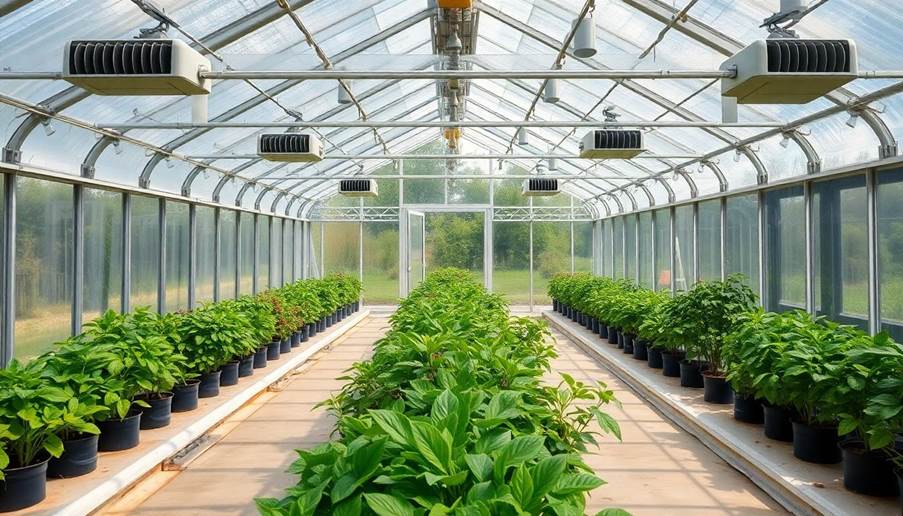
A pest-free greenhouse environment relies on consistent monitoring and proactive management strategies. Temperature control between 65-75°F (18-24°C) during the day and 60-70°F (15-21°C) at night creates unfavourable conditions for pest development.
Proper airflow prevents stagnant conditions where pests thrive. Install exhaust fans at the upper sections of your greenhouse and intake vents near ground level to create vertical air movement. Keep humidity levels below 85% through:
| Environmental Factor | Optimal Range | Impact on Pest Control |
| Daytime Temperature | 65-75°F (18-24°C) | Reduces pest reproduction |
| Night Temperature | 60-70°F (15-21°C) | Limits pest activity |
| Humidity | Below 85% | Prevents fungal growth |
| Plant Spacing | 15-20 cm | Improves air circulation |
Regular cleaning eliminates pest breeding grounds and prevents infestations. Essential sanitation practices include:
By combining proper ventilation with strict sanitation protocols, these practices create an environment that naturally deters pest populations while promoting healthy plant growth.
Creating a pest-free environment in your polycarbonate greenhouse requires a well-planned combination of preventive measures natural controls and chemical solutions when necessary. By implementing proper ventilation maintaining optimal temperatures and following strict sanitation protocols you’ll significantly reduce pest problems in your growing space.
Remember that successful pest management isn’t about eliminating all insects but rather about creating a balanced ecosystem. Your greenhouse can thrive through regular monitoring early intervention and the strategic use of both natural and chemical controls when needed.
Stay vigilant with your pest control routine and you’ll enjoy a productive and healthy growing environment all year round.
Greenhouses provide a controlled environment that helps manage pests effectively. They act as physical barriers against insects and allow for better monitoring of pest populations. Modern greenhouses with UV-blocking materials and specialised screening offer enhanced protection while maintaining optimal growing conditions.
Look for signs such as damaged leaves, sticky residue, and stunted plant growth. Common pests include aphids, whiteflies, spider mites, thrips, and fungus gnats. Regular plant inspection is crucial for early detection. Use a magnifying glass to spot smaller pests and examine both upper and lower leaf surfaces.
Beneficial insects like ladybugs and predatory mites are highly effective natural controls. Companion planting with pest-repelling plants such as rosemary and petunias helps deter unwanted insects. Creating ‘biological islands’ with flowering plants supports beneficial insect populations. Natural deterrents like diatomaceous earth also prove effective.
Temperature control is crucial for pest management. Maintain daytime temperatures between 18-24°C and night temperatures between 15-21°C to create unfavourable conditions for pest development. Proper temperature control helps prevent pest outbreaks while supporting healthy plant growth.
Install mesh screens on vents and doors, conduct regular plant inspections, and maintain strict sanitation protocols. Quarantine new plants before introducing them to the greenhouse. Keep tools clean and sterilised, remove plant debris promptly, and ensure proper ventilation to prevent pest establishment.
Chemical controls can be 70-90% effective when properly applied. However, success depends on correct timing, application methods, and environmental conditions. Always rotate chemical classes to prevent resistance and ensure proper ventilation during application. Use organic-certified options when possible.
Proper ventilation is essential for pest control. It helps maintain optimal humidity levels and prevents conditions that favour pest development. Install exhaust fans and oscillating fans, and ensure adequate plant spacing for airflow. Good ventilation also helps distribute natural predators throughout the greenhouse.
Conduct thorough pest inspections at least weekly. Use yellow sticky traps to monitor flying insect populations and document pest patterns. Daily quick checks during routine plant care can help spot early signs of infestation. Increase monitoring frequency during peak pest seasons.

Learn how to choose your perfect first greenhouse with our expert guide. Discover size, materials, and features to extend your growing season by 2-3 months.
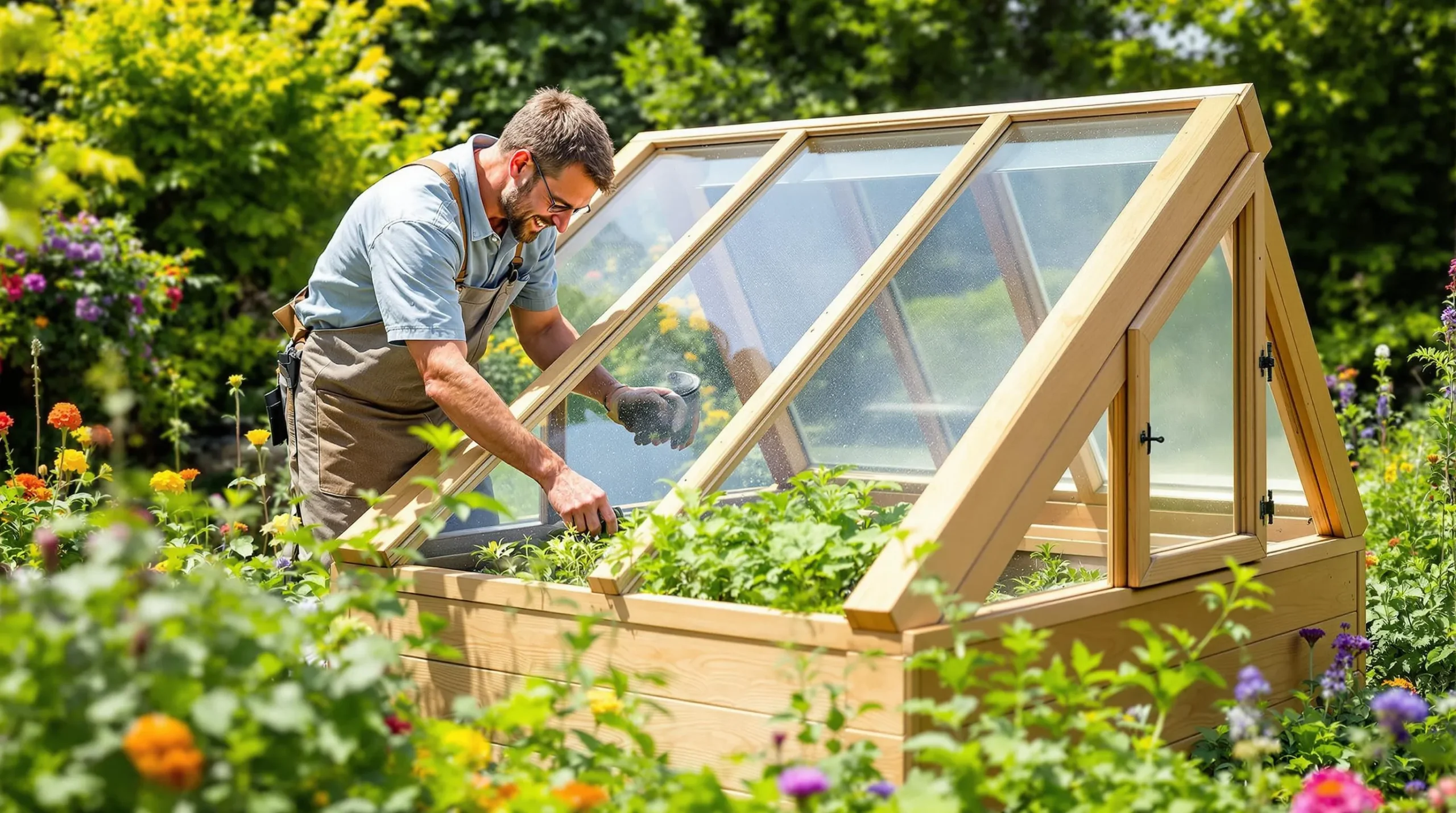
Learn how to make a cold frame to extend your growing season, protect plants in winter, and grow seedlings all year. Simple, cost-effective, and DIY-friendly!